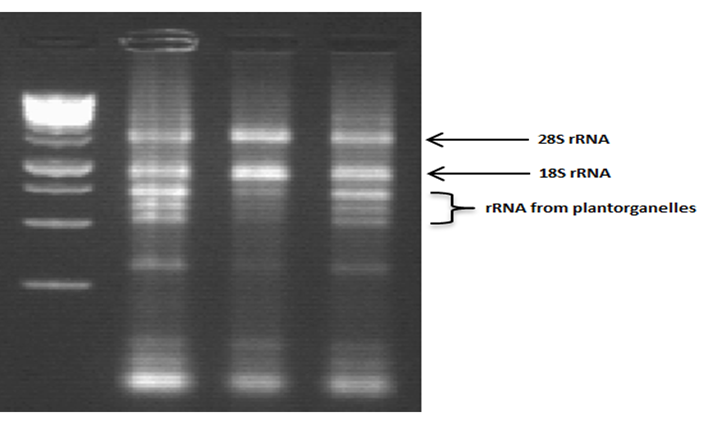Team:Wageningen UR/Journal/week11
From 2012.igem.org
Hanyue0731 (Talk | contribs) (→Lab work) |
Hanyue0731 (Talk | contribs) (→Lab work) |
||
| Line 11: | Line 11: | ||
'''TuYV''' | '''TuYV''' | ||
| - | * Two (non-readthrough) gene variants 1 and 1H were digested and ligated into pSB1A3 linearized backbone. | + | * Two (non-readthrough) gene variants 1(TuYV coat protein) and 1H(TuYV coat protein with his-tag) were digested and ligated into pSB1A3 linearized backbone. |
Revision as of 08:38, 20 September 2012
week 11: 9 july - 15 july
Office work
Lab work
TuYV
- Two (non-readthrough) gene variants 1(TuYV coat protein) and 1H(TuYV coat protein with his-tag) were digested and ligated into pSB1A3 linearized backbone.
Written by: Han Yue
PLRV
The start of the lab work on PLRV
We went out to the potato fields near Wageningen to look for PLRV infected potatoes. We thought we found some infected plants, based on the primary symptoms namely smaller sizes of the plants and curled leafs (figure 1).
We contacted Kees Bus and Chris Cuperus, who are experts at the Wageningen University on potato diseases. Judging the pictures, they concluded that these plants were probably not infected by PLRV.
This week we started trial experiments for RNA isolation from potato plants. We used a RNA isolation protocols using Trizol (see protocol page). The RNA product concentration was very high (upto 3500 ng/µL).
RNA isolate purity checked. RNA is of very good quality. Note that smaller rRNA bands visible in the leaf sample are derived from plant organelles such as plastids and chloroplasts
HepB
- Production of a HepB PCR fragment with pre- and suffix by means of a PCR using primers annealing to a plasmid containing the Hepatitis B core protein encoding gene. These primers also have an overhang that encode for pre- and suffix
 "
"











